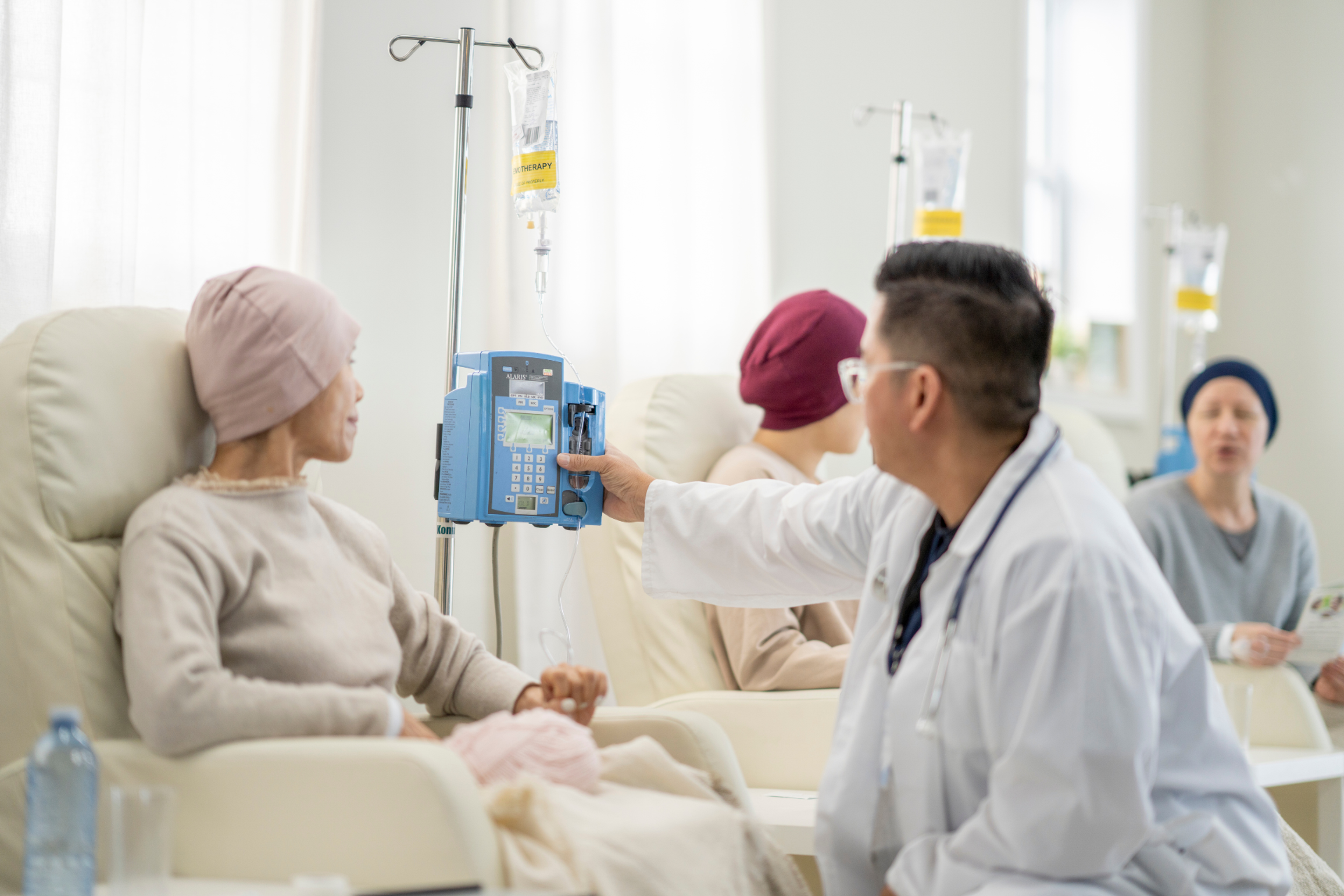Medical School Early Decision Programs: Overview & Guide
Explore the advantages and considerations of applying to medical school through early decision programs.
Posted July 9, 2025

Join a free event
Learn from top coaches and industry experts in live, interactive sessions you can join for free.
Table of Contents
What if you could secure your spot in medical school before most applicants even submit their first application? That’s the opportunity Early Decision Programs (EDPs) offer. For highly committed pre-meds, applying early can increase your chances of admission if you’re a strong fit for the school and fully prepared. But the decision comes with risks, too.
Choosing between early decision and the standard admissions route is one of the first major choices on your path to becoming a doctor. In this article, we’ll walk you through how early decision works, who it’s best for, and how to decide whether applying early gives you a real advantage, or limits your options.
Understanding Early Decision in Med School
Early decision programs in medical schools offer an opportunity for applicants to secure their spots early in the application cycle. By applying through early decision, candidates are indicating their strong commitment and preference for a specific medical school. It's important to note that early decision is a binding agreement, meaning that if accepted, the applicant is required to attend that particular medical school and withdraw applications from all other institutions.
Early decision deadlines are usually in the late summer or early fall, months before regular admissions deadlines. This gives applicants a significant advantage of being ahead in the admissions process and potentially receiving an acceptance offer much earlier.
When considering early decision in medical school, it is crucial for applicants to thoroughly research and evaluate their options. Choosing the right medical school is a decision that will shape their future career as a healthcare professional. By committing to a specific institution through early decision, applicants must be confident in their choice and believe that it aligns with their academic and personal goals.
One advantage of applying through early decision is the increased likelihood of acceptance. Medical schools often reserve a certain number of spots for early decision applicants, and competition for these spots may be less intense compared to regular admissions. This can be particularly beneficial for applicants who have a strong desire to attend a specific medical school and are willing to commit early.
However, it's important to consider the potential drawbacks of early decision as well. By applying through this program, applicants are essentially limiting their options and forfeiting the opportunity to compare multiple acceptance offers. This can be a significant decision to make, as it requires applicants to be confident in their choice without knowing what other opportunities may arise.
Additionally, the binding nature of early decision means that applicants must withdraw their applications from all other institutions if accepted. This can be a challenging decision to make, especially if an applicant receives an acceptance offer from a higher-ranked or more prestigious medical school later in the admissions cycle.
Overall, early decision in medical school can be a strategic option for applicants who have a clear preference for a specific institution and are confident in their choice. It offers the advantage of securing a spot early in the admissions process and potentially receiving an acceptance offer sooner. However, it also requires careful consideration and evaluation of the potential limitations and drawbacks. Applicants should weigh their options, consult with mentors or advisors, and make an informed decision that aligns with their long-term goals and aspirations.
Pros and Cons of Early Decision in Med School
Applying through an early decision program has its advantages and disadvantages that applicants should carefully consider.
When it comes to applying to medical school, the decision of whether to apply through an early decision program can be a tough one. It's important for applicants to weigh the pros and cons before making a final decision. Let's take a closer look at the advantages and disadvantages of early decision in med school.
Pros:
Increased chances of acceptance:
Medical schools tend to accept a higher percentage of early decision applicants, appreciating their commitment to the institution. By applying early decision, applicants demonstrate their dedication to a specific medical school, which can work in their favor during the admissions process. Admissions committees often view early decision applicants as highly motivated and likely to accept an offer of admission if extended.
Potential stress reduction:
By securing an early acceptance, applicants can avoid the prolonged uncertainty and stress that often accompanies the regular admissions process. The waiting game can be mentally and emotionally draining, but early decision applicants can bypass this anxiety by receiving an early decision from their top-choice medical school. This can provide a sense of relief and allow applicants to focus on other aspects of their academic and personal lives.
Opportunity for focused preparation:
Applying early decision allows applicants to focus on preparing for one specific medical school and tailor their application accordingly. Instead of spreading their efforts across multiple applications, early decision applicants can dedicate their time and energy to researching and understanding the unique qualities and values of their chosen medical school. This focused preparation can result in a more compelling and targeted application, increasing the likelihood of acceptance.
Cons:
Binding commitment:
Early decision is a binding agreement, limiting applicants' options and requiring them to withdraw from other schools they may have been interested in attending. While early decision can be advantageous for those who have a clear first-choice medical school, it can be restrictive for applicants who want to explore multiple options. By committing to one school early on, applicants forfeit the opportunity to compare offers and potentially attend a different institution that may better align with their goals and preferences.
Reduced negotiation power:
Accepting an early decision offer may limit applicants' ability to negotiate financial aid or scholarship packages with other institutions. When applicants apply through regular decision, they have the advantage of comparing financial aid offers from different schools and leveraging one offer against another. However, early decision applicants may not have the same bargaining power, as they have already committed to attending their early decision school regardless of the financial package offered.
Limited time for exploration:
Applying early decision means applicants have less time to explore other medical schools and gather all relevant information before making a final decision. While early decision can provide a sense of security and eliminate the uncertainty of the admissions process, it also means that applicants may not have the opportunity to fully explore other potential options. This limited time for exploration can be a disadvantage for applicants who want to thoroughly research different medical schools and make an informed decision.
As you can see, there are both pros and cons to applying through an early decision program in med school. It's important for applicants to carefully consider their own priorities, goals, and circumstances before making a decision. Ultimately, what works for one applicant may not work for another, so it's crucial to weigh the advantages and disadvantages in the context of your own situation.
How to Apply through Early Decision
Applying through the early decision process requires careful planning and preparation. Here are four useful tips that can help you through your application:
1. Research and Select the Right Medical School
Before committing to an early decision, thoroughly research and visit the medical school of your choice. Ensure that it aligns with your goals, values, and academic preferences.
2. Prepare a Strong Application
Early decision applicants should aim to create a comprehensive, well-crafted application that highlights their motivation, accomplishments, and dedication to the field of medicine. Seek feedback from mentors and advisors to ensure all application components, including personal statements and letters of recommendation, are strong.
3. Complete the Early Decision Agreement
Applicants must complete and submit the early decision agreement, clearly understanding its binding nature and the commitments it entails.
4. Submit the Application Early
Ensuring that your application materials are submitted well before the early decision deadline is crucial to maximize your chances of acceptance.
Impact on Admission Chances
Early decision programs can significantly impact an applicant's chances of acceptance. Medical schools generally reserve a portion of their available spots for early decision applicants, increasing the likelihood of admission for those who demonstrate a genuine interest in the institution.
It's essential to note that while early decision can provide a competitive advantage, it does not guarantee acceptance. Applicants must meet the academic and personal qualifications required by the medical school.
Comparison with Regular Admissions
Early decision and regular admissions differ in various aspects:
Application Volume
Early decision programs receive fewer applications compared to regular admissions, resulting in a less competitive pool.
Acceptance Rates
Medical schools tend to have higher acceptance rates for early decision applicants than for those applying through regular admissions.
Timeline
Early decision applicants receive a decision earlier in the admissions cycle, allowing them to plan and prepare for their medical school journey well in advance.
Flexibility and Options
Regular admissions provide applicants with the flexibility to apply to multiple medical schools and compare offers before making a final decision.
Note: The decision to apply through an early decision program should be based on individual circumstances, goals, and the level of commitment to a specific medical school. Thoroughly weigh the pros and cons before making this significant decision that will shape your future career in medicine.
The Bottom Line
Applying through an Early Decision Program (EDP) can be a smart move, if you’re 100% sure about the school and confident in your qualifications. It can give you a head start in a competitive admissions cycle, reduce stress, and show genuine commitment to your top-choice school. But it also comes with trade-offs, like giving up the chance to compare offers or explore other programs. If you’re a highly focused applicant with a clear first choice, EDP might be the edge you need. Just make sure you understand the risks, prepare early, and seek guidance before committing. In the end, the right path is the one that aligns best with your goals, readiness, and long-term vision for your medical career.
Ready to Apply Early to Med School? Get Expert Help.
If you're thinking about Early Decision, don’t go in without a strategy. Our medical school admissions coaches can help you decide if EDP is right for you, strengthen your application, and prepare you for interviews, all before the deadline hits.
Read these next:
- Med School Application Timeline: Key Dates and Strategies
- How Many Medical Schools Should I Apply To? A Strategic Approach
- Medical School Requirements: What You Need to Get In
- Is Med School Worth It? Weighing the Pros and Cons
FAQs About Early Decision in Medical School
Is early decision worth it in medical school?
- It can be worth it if you have a strong application and a clear top-choice school. Early decision applicants often face less competition and may receive an earlier acceptance, but the binding nature of the decision limits your ability to compare offers from other schools.
Does medical school have early decisions?
- Yes, many medical schools offer Early Decision Programs (EDPs). These programs let you apply to one school early and, if accepted, you must attend and withdraw all other applications. It's designed for applicants who are fully committed to one specific school.
What is the 32-hour rule in medical school?
- The 32-hour rule typically means that applicants must complete at least 32 credit hours of science coursework, like biology, chemistry, or physics at a U.S. or Canadian institution. This helps ensure that you’re academically prepared for the rigors of medical school.
Does applying early to medical school help?
- Yes, applying early can improve your chances of acceptance. Schools often fill a portion of their class with early applicants, and your application may get more attention because the pool is smaller. Just make sure your materials are strong and complete before applying.
Browse hundreds of expert coaches
Leland coaches have helped thousands of people achieve their goals. A dedicated mentor can make all the difference.













